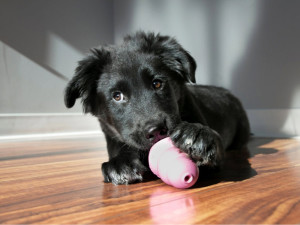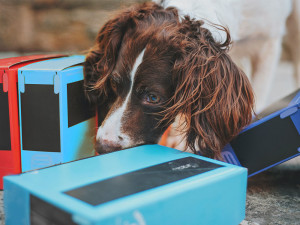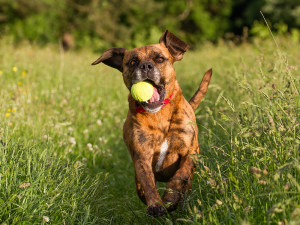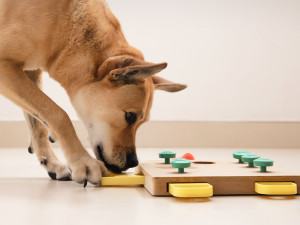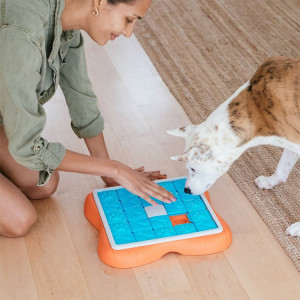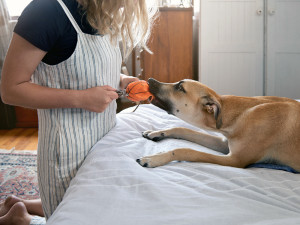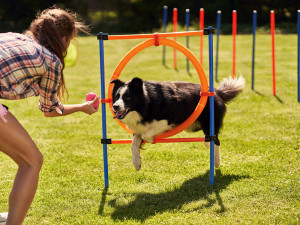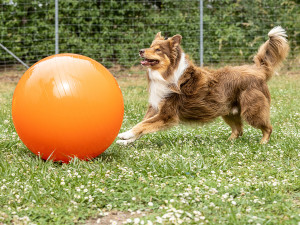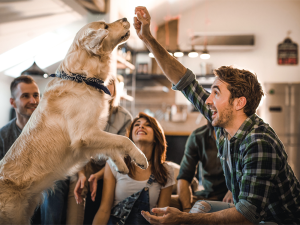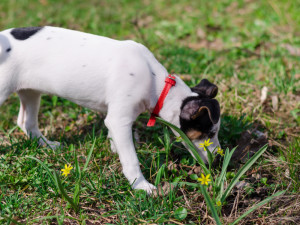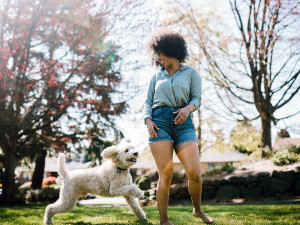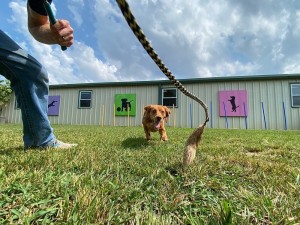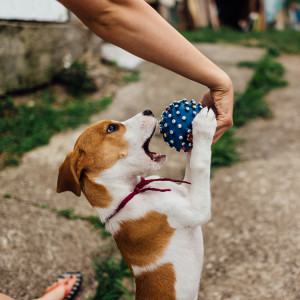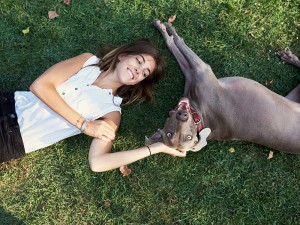How to Make Your Dog’s Life Better with Canine Enrichment
Enrich your dog’s life by doing what comes naturally.
These days, most dogs enjoy a pretty chill life — lying on the couch and then a walk around the neighborhood — but that understimulation can result in the boredom that is the enemy of the happy, well-behaved dog.
And while some pups may get enough physical activity, many don't have many opportunities to exercise their minds. That's where enrichment for dogs come in. Making dogs work to get treats (or even all of their food) by solving the puzzles offered by enrichment toys is a natural fusion.
Trick question: All dogs are perfect! But find out which type is the best fit for you.
What is Enrichment for Dogs?
Enrichment provides massive benefits to animals under human care, whether those animals are in zoos, aquaria, shelters or sleeping on our couch. What is far less well known is exactly what “enrichment” means beyond feeding animals in a way that presents challenges to acquiring food or giving them puzzle toys or regular toys to amuse them.
Enrichment for dogs has often been defined narrowly: enrichment is a variety of play, toys and exercise to make dogs’ lives richer and more interesting. But enrichment is also so much more than that.
How much do you spend on your pet per year?
Providing enrichment to dogs (or to any animal under your care) requires recognizing the importance of natural behaviors to animals’ well-being and placing value on creating opportunities for those natural behaviors to be performed.
Cognitive Enrichment
In the book Canine Enrichment for the Real World, authors Allie Bender and Emily Strong note that enrichment can be defined as “meeting all of an animal’s needs as closely as possible to how they would be met in the wild, in order to empower them to engage in species-typical behaviors in healthy and appropriate ways.”
The emphasis on eliciting natural behaviors adds to the concept — and to your dogs’ quality of life — substantially. Dogs have an extensive range of natural behaviors, and many of the items on the list are familiar to us: physical exercise of sufficient quantity and intensity; mental stimulation, such as problem-solving and exploring; digging; barking; chewing; social interactions with both people and other dogs; and sufficient sleep.
Enrichment Ideas for Dogs
Each dog has their own interests. it’s up to the individual person and their dog to determine whether or not any of these activities are especially satisfying for their dog.
1. Kong
Kongs are a wonderful way to provide problem solving opportunities, mental exercise, and the ability for dogs to use their mouths in the physical way that so many dogs need.
2. Nose work
The nose work training process encourages dogs to refine their innate hunting and scenting skills providing constructive physical exercise and intense mental enrichment.
3. Fetch
Fetch is fun and interactive, it enhances the relationship between you and your pup and provides plenty of enrichment through skill building and physical exercise.
4. Treat-dispensing toys
Treat dispensing toys provide plent of mental enrichment. Playing and chewing releases feel-good chemicals in the brain, which keeps dogs happy, busy, and using up energy.
5. Puzzle toys
Treat-puzzle games are a fun and easy way to stimulate the dog’s senses — think of them like a enrichment “tool” for the dog to use its natural instincts.
6. Tug
Tug is a great enrichment game for most dogs. Dogs learn lessons such as impulse control, mouth control and cooperation as well as skills like “take it” and “drop it.”
7. Agility
Agility works for pretty much every dog, no matter the breed, size or age. It’s an enriching sport that provides both physical and mental exercise and skill building.
8. Herding
Herding and treibball provide dogs with enrichment through problem-solving the process of tending to a flock.
9. Training new behaviors and tricks
Training your dog with tricks can boost their confidence, enhance their abilities, and give them a good amount of mental and physical stimulation.
10. Scent Walks
Dogs are equipped with an amazing sniffer. Allowing your dog to explore different scents can enhance their well-being and provide them with the opportunity to engage in their natural instincts.
11. Games
By switching between the excitement of playing and the discipline of responding to a cue, training games can provide dogs with an enriching experience.
Other enrichment ideas include snuffle mats, lure coursing, Frisbee and running games.
Just because you don’t have an working dog doesn’t mean your dog doesn’t love to be busy. No matter their age, breed or size, all dogs have a natural desire to engage in enriching mental and physical activities. Leave them to their own devices and they’ll likely find activities that have the potential to create havoc in your home!
Tips on Dog Enrichment Ideas
The following general tips are essential for working toward providing the best enrichment possible for your dog.
Ideal enrichment varies by individual as well as by breed.
Dogs have different needs in terms of what they enjoy and how much time they want to spend on such activities, including how much time they spend in social contact with others.
Providing choices to a dog is a great form of enrichment.
Whether those choices are about which way to walk, what to sniff, or whether or not to approach a person — choice provides enrichment. Having some control over their environment and what happens to them prevents dogs from feeling powerless, which in turn can lead to all kinds of negative emotions.
Physical exercise affects the whole body. While exercise affects the brain, mood, digestion, memory, appetite, sleep, learning, stress, impulse behavior, depression and anxiety, not just any physical exercise will do. Some dogs require hard exerciseopens in new tab for considerable amounts of time each day while others thrive with shorter, gentler bouts of physical activity. (Interestingly, the many benefits of exercise are not achieved through forced treadmill exercise.)
Safety and security are critical elements of enrichment.
Providing a spot for refuge that may be used by a dog who needs to relax in a busy household can make a huge difference to many dogs.
Mental stimulation can take many forms.
Mental stimulation isn’t just enrichment games. Dog sports, play, training, foraging and walks all offer dogs an opportunity to use their brains in beneficial ways.
Let them be dogs.
Dogs typically have a need to engage in activities that they enjoy whether that’s digging, barking, going on sniffariopens in new tab, sleeping a lot, chewing, foraging or playing. Allowing them opportunities to engage in what comes naturally is a major goal of enrichment.
Of course, some behaviors that dogs enjoy — such as digging, barking and chewing — are problematic for pet parents (and neighbors!) and can even indicate a dog in distress if they are being done to excess. The goal of enrichment is not unlimited chances to engage in such behaviors, but to create enjoyable and appropriate opportunities to do so.


